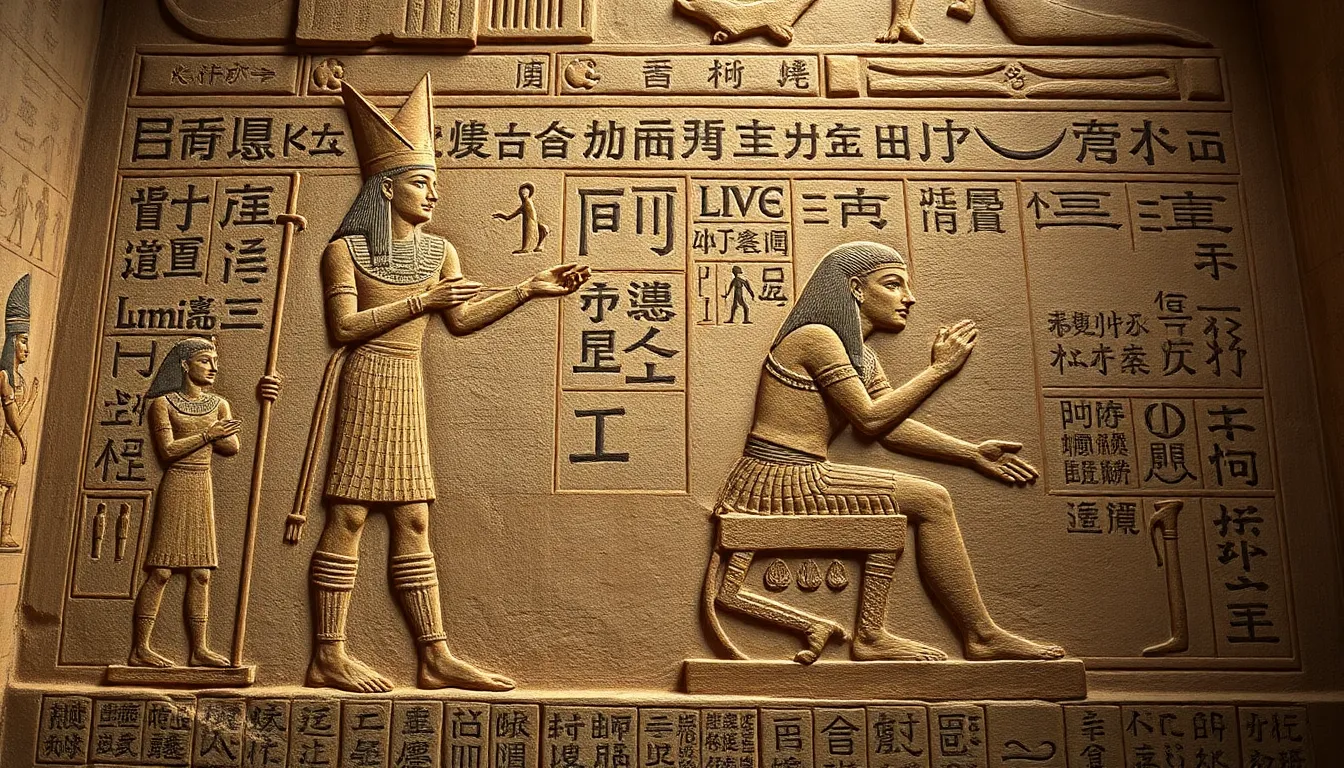The Influence of Tomb Texts on Egyptian Art
I. Introduction
Tomb texts, also known as funerary texts, are inscriptions found within ancient Egyptian tombs that played a significant role in the beliefs and practices surrounding death and the afterlife. These texts served not only as a guide for the deceased in the afterlife but also as a means to communicate the values and ideologies of ancient Egyptian society.
The relationship between tomb texts and Egyptian art is profound, as these texts often inspired and informed the artistic expressions found in tomb paintings, reliefs, and other decorative elements. This article aims to explore how tomb texts influenced artistic expression in ancient tombs, revealing the intricate connections between language, symbolism, and visual culture in ancient Egypt.
II. Historical Context of Tomb Texts
The origins of tomb texts can be traced back to the early dynastic periods of Egypt, evolving significantly over time. Initially, these texts were simple inscriptions, but as religious beliefs and funerary practices developed, so too did the complexity and content of the texts.
Tomb texts played a crucial role in funerary practices, as they were believed to provide the deceased with the necessary knowledge and support to navigate the afterlife. These texts often included spells, prayers, and hymns that invoked divine protection and assistance.
- Old Kingdom: The Pyramid Texts, the earliest known collection of religious texts, inscribed in the pyramids of pharaohs.
- Middle Kingdom: The Coffin Texts, which expanded access to the afterlife for non-royal individuals.
- New Kingdom: The Book of the Dead, a compilation of spells and instructions for the afterlife, widely used by the elite.
III. Symbolism and Themes in Tomb Texts
Tomb texts are rich in symbolism and themes that reflect the values and beliefs of ancient Egyptians. Common themes found in these texts include:
- Resurrection: The belief in the rebirth of the deceased and their eternal life.
- Protection: Spells and prayers aimed at safeguarding the deceased from malevolent forces.
- Offerings: Invocations for sustenance and offerings to be provided in the afterlife.
The symbolic language and imagery used in tomb texts often translated into visual art forms, with specific motifs and icons appearing in both text and imagery. For example, the ankh symbol, representing life, is frequently depicted alongside texts discussing resurrection.
IV. Artistic Representations of Tomb Texts
The integration of text and image is a hallmark of ancient Egyptian art, particularly in tombs where texts are illustrated in art. Specific tombs, such as those of Tutankhamun and Nefertari, showcase this integration beautifully.
In Tutankhamun’s tomb, the walls are adorned with scenes that directly correlate with the texts inscribed, depicting the pharaoh’s journey in the afterlife. Similarly, Nefertari’s tomb features vibrant paintings that illustrate passages from the Book of the Dead, enhancing the text’s messages through visual representation.
This synergy between text and image allows for a multi-layered understanding of the tomb’s purpose, as both elements work together to convey comprehensive narratives about the afterlife and the deceased’s status.
V. The Role of Scribes and Artists in Tomb Creation
The creation of tombs was a collaborative effort between scribes and artists, each bringing unique skills to the process. Scribes were responsible for inscribing the texts with precision, ensuring that the spells and prayers were accurate and complete.
Artists, on the other hand, focused on the visual representation of these texts, using techniques that included:
- Fresco painting: A method where pigments were applied to wet plaster, allowing for vibrant colors.
- Relief carving: Creating three-dimensional images that added depth and texture to the tombs.
The accuracy in depicting both texts and imagery was paramount, as any errors could potentially jeopardize the deceased’s journey in the afterlife.
VI. The Impact of Tomb Texts on Artistic Styles and Techniques
Tomb texts significantly influenced the stylistic choices in Egyptian art. As the religious and cultural context evolved, so did the artistic expressions found in tombs. Techniques used to incorporate texts into visual narratives included:
- Hieroglyphic inscriptions: Carefully planned placement of texts within scenes to enhance the overall narrative.
- Color symbolism: The use of specific colors to evoke certain emotions or ideas, such as blue for creation and rebirth.
Over time, artistic styles changed as new religious beliefs emerged and different dynasties rose to power, reflecting the evolving nature of tomb texts themselves.
VII. Preservation and Legacy of Tomb Texts and Art
Preserving tomb texts and their artistic counterparts poses significant challenges, including environmental degradation and human interference. However, many tombs have survived, allowing modern scholars to study these ancient expressions.
The impact of tomb texts extends beyond their original context, influencing later Egyptian art and culture. Modern interpretations of tomb texts can be seen in contemporary art, where artists draw on ancient themes of life, death, and the afterlife.
VIII. Conclusion
In summary, tomb texts have had a profound influence on Egyptian art, shaping not only the visual narratives within tombs but also the cultural and religious beliefs of ancient Egyptians. Understanding these texts provides valuable insights into the interconnectedness of language and visual culture in Ancient Egypt.
The ongoing relevance of tomb texts in modern interpretations allows us to appreciate their significance in the ancient world, highlighting the enduring legacy of Egyptian art and its profound connection to the beliefs surrounding life and death.




